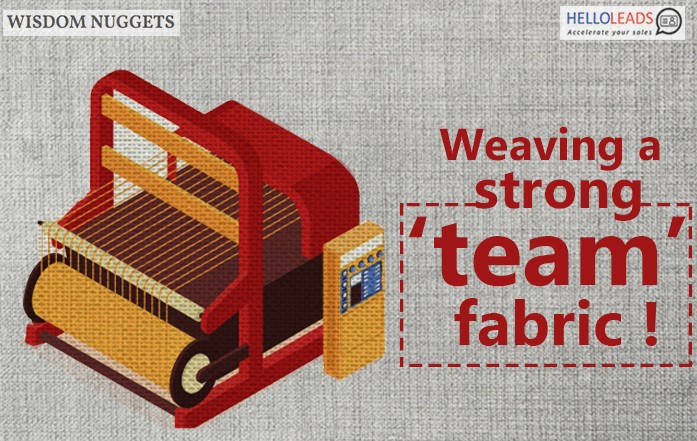
We are all quite familiar with the image of a cloth being woven by a weaver using a handloom. Weaving is an amazing process, wherein long, tiny threads get manifested as a strong fabric, by undergoing a series of designated steps. It is a remarkable journey for a simple thread to part off with its ‘thread’ status and acquires the sophisticated ‘fabric’ status. Modern computerized weaving machines can get programmed in a jiffy and have the capability of churning out hundreds of designs at the click of a mouse. These ‘monster’ machines operate at such high speeds that one cannot even see the threads, while they are being drawn and woven, with remarkable accuracy.
Weaving is a method of textile production in which two distinct sets of yarn are interlaced at right angles to form a fabric in a machine known as the Loom. The longitudinal yarns, which are held in tension are called as ‘Warp’. The lateral threads, which are woven are called as ‘Weft’. Generally, Warp is the stronger one, as they have to run the entire length of a fabric. The way, the warp and weft interlace with each other is known as the Weave. The ultimate strength of the fabric depends upon the strength of the individual yarns and the pattern in which they are interlaced with each other.

We are all quite familiar with the image of a cloth being woven by a weaver using a hand loom. Weaving is an amazing process, wherein long, tiny threads get manifested as a strong fabric, by undergoing a series of designated steps. It is a remarkable journey for a simple thread to part off with its ‘thread’ status and acquire the sophisticated ‘fabric’ status. Modern computerized weaving machines can get programmed in a jiffy and have the capability of churning out hundreds of designs at the click of a mouse. These ‘monster’ machines operate at such high speeds that one cannot even see the threads, while they are being drawn and woven, with remarkable accuracy.
Weaving is a method of textile production in which two distinct sets of yarn are interlaced at right angles to form a fabric in a machine known as the Loom. The longitudinal yarns, which are held in tension are called as ‘Warp’. The lateral threads, which are woven are called as ‘Weft’. Generally, Warp is the stronger one, as they have to run the entire length of a fabric. The way, the warp and weft interlace with each other is known as the Weave. The ultimate strength of the fabric depends upon the strength of the individual yarns and the pattern in which they are interlaced with each other.
Stephen M R Covey, in his bestseller, ‘The Speed of Trust’ talks about the 2 factors, Character and Competence, which can drive everything else in any organization. A great product or service cannot make up for them. He says “Character is what we are, Competence is what we can do.” Just like the warp, Character must be the stronger one, since it has to run up to one’s entire lifetime. Competence becomes the weft, which always is interlaced with one’s Character. This needs to be honed at every opportunity so that we get highly skilled in whatever job, we undertake. Both these traits need to be showcased at all times, so that trust and credibility are built.
Character and Competence are the two most important leadership yarns, which need to be developed continuously by every individual, who aspires to be a leader. The leadership yarns can be interlaced in myriad ways, to make a strong ‘team’ fabric.
Share this blog :











Leave a Reply